RARE! WWII 389th Bomb Group 8th Air Force October 6th, 1944 "Mission #206 - Hamburg / Rhenania, Germany (Oil Depot)" Type 1 Aerial Combat Mission Photograph*
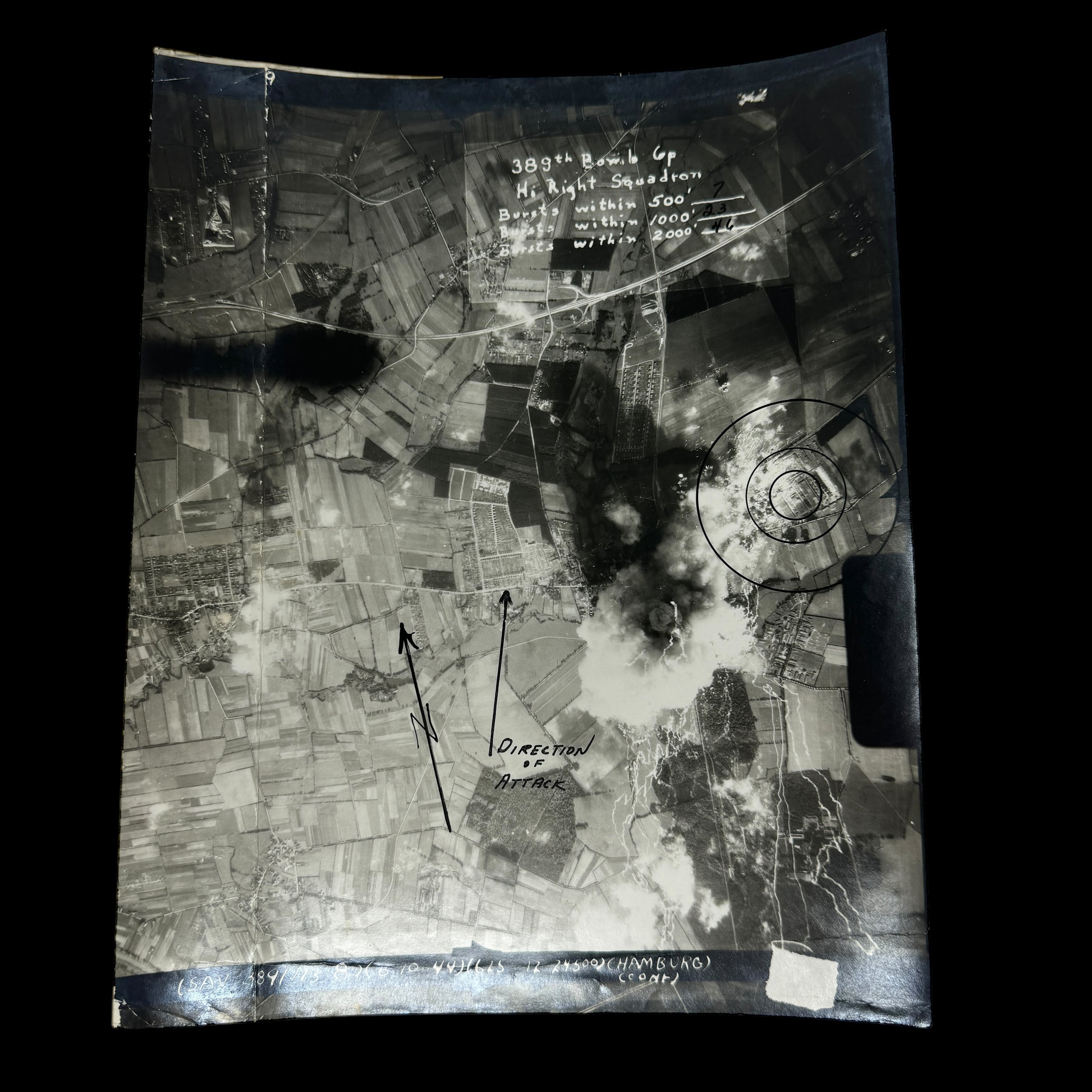
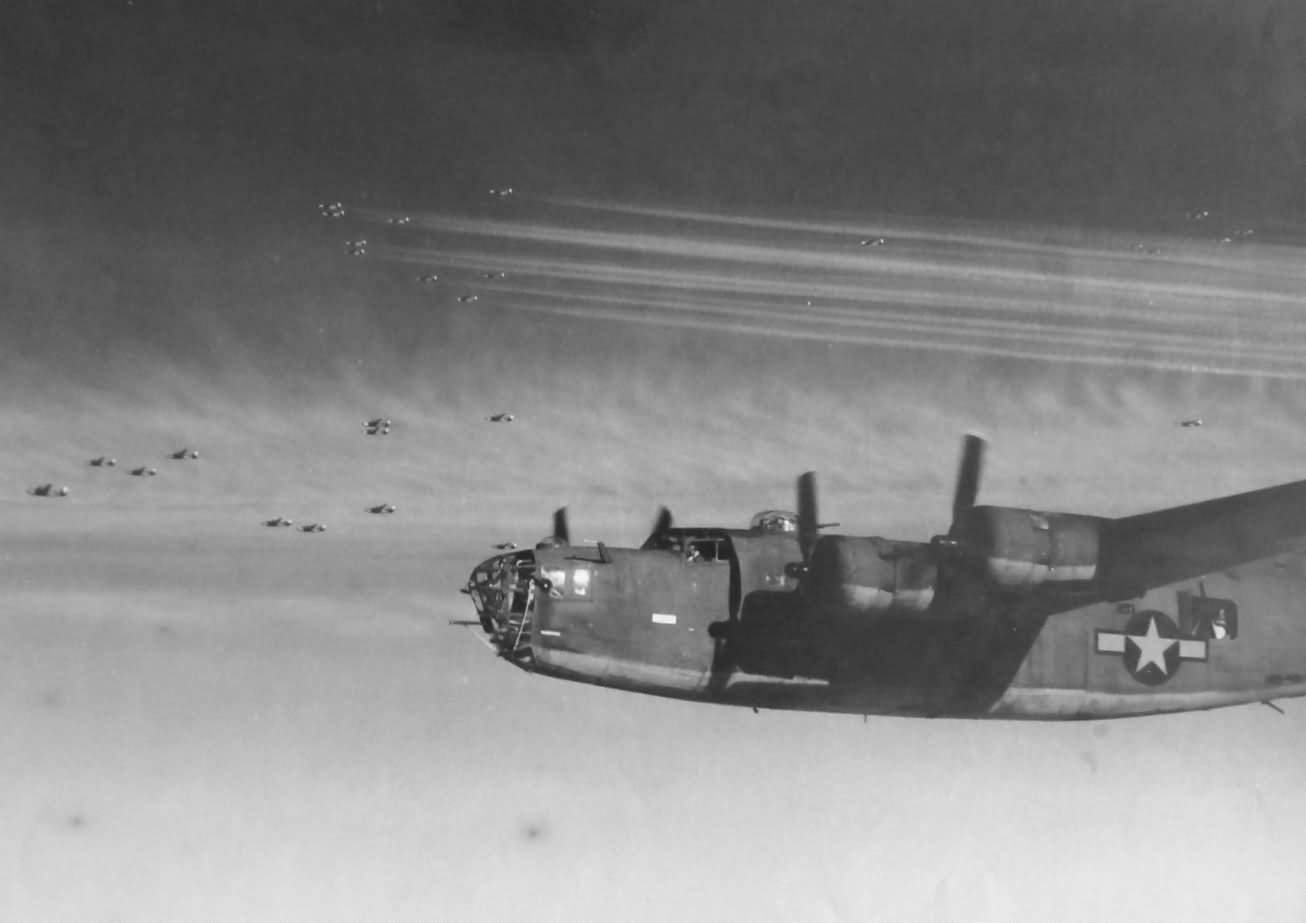

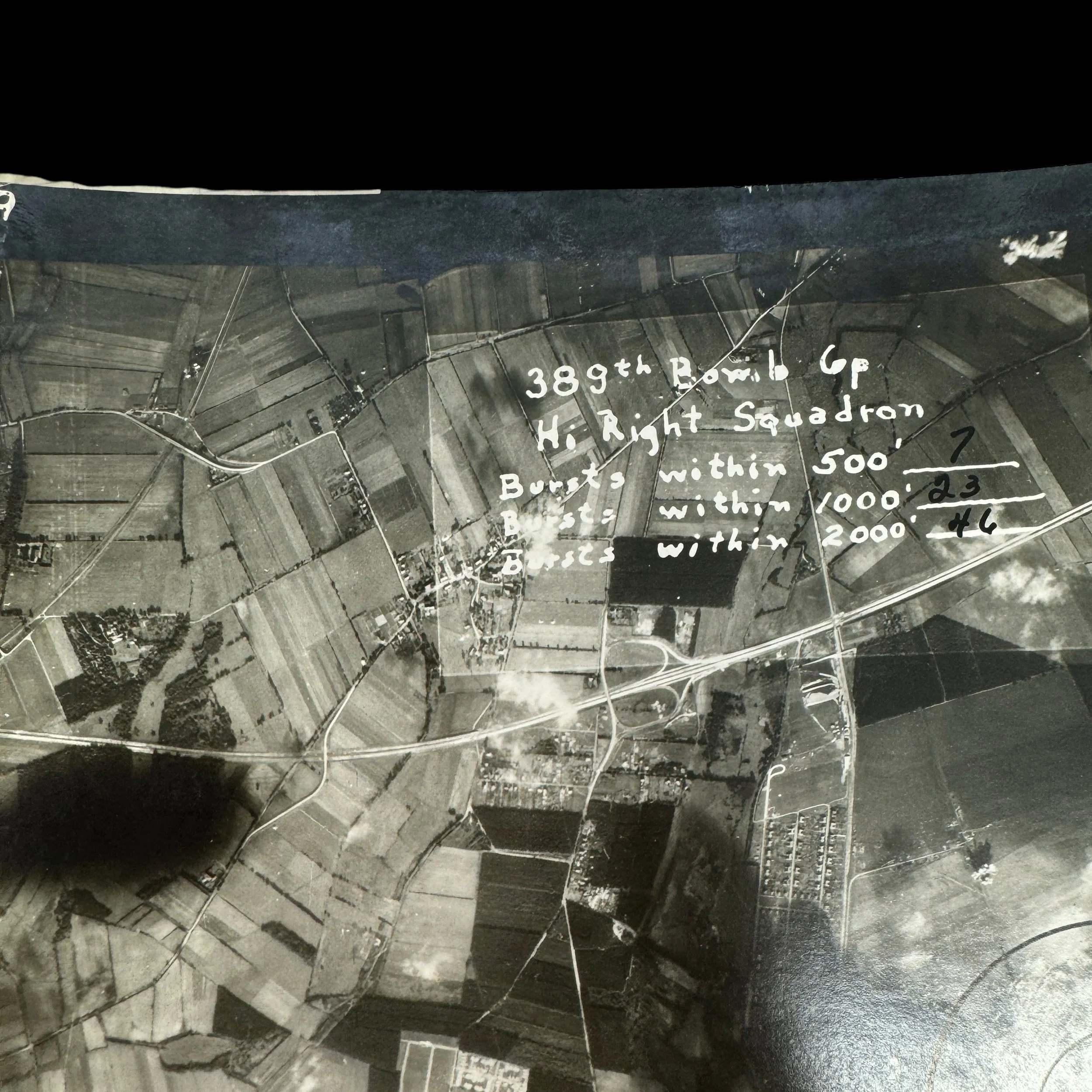
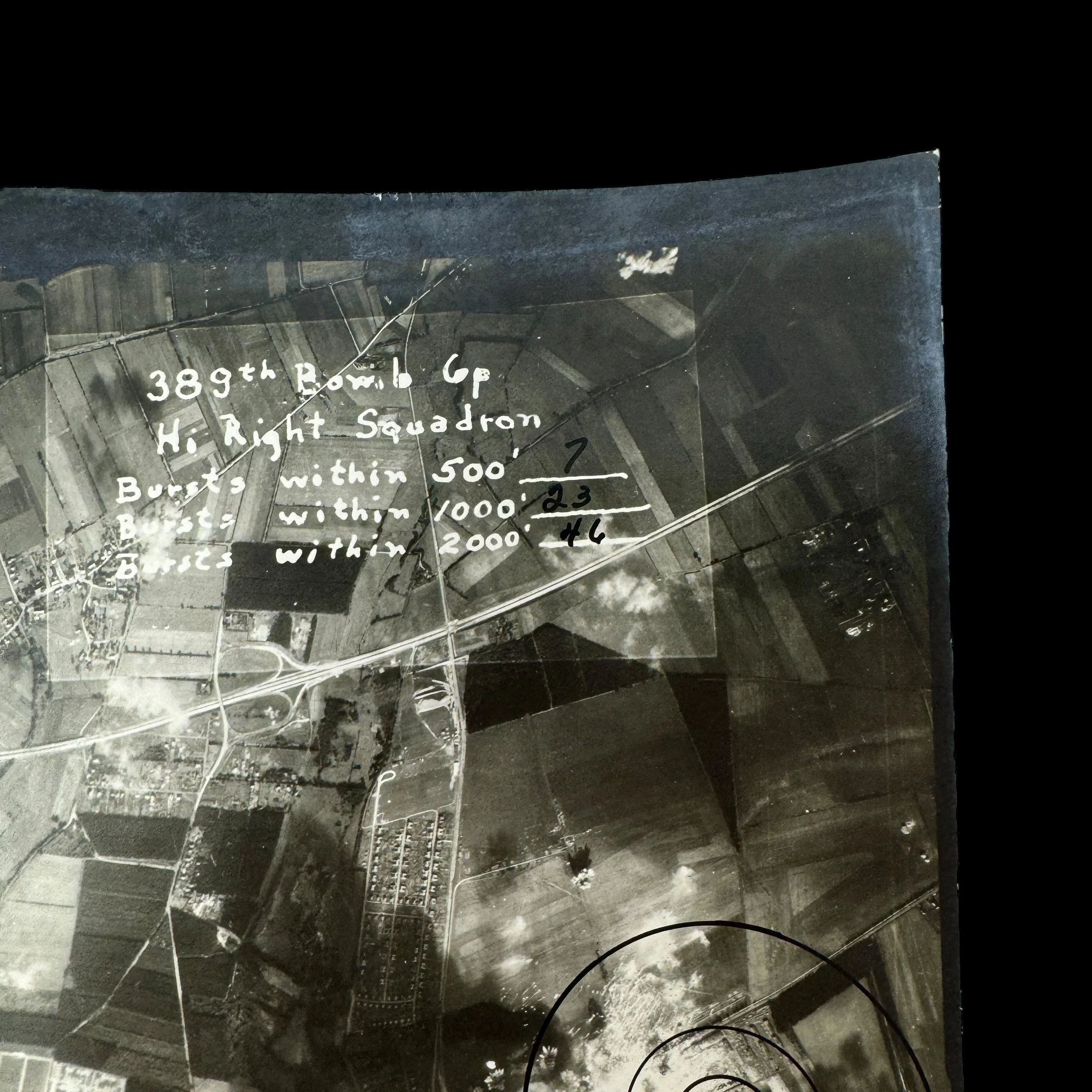
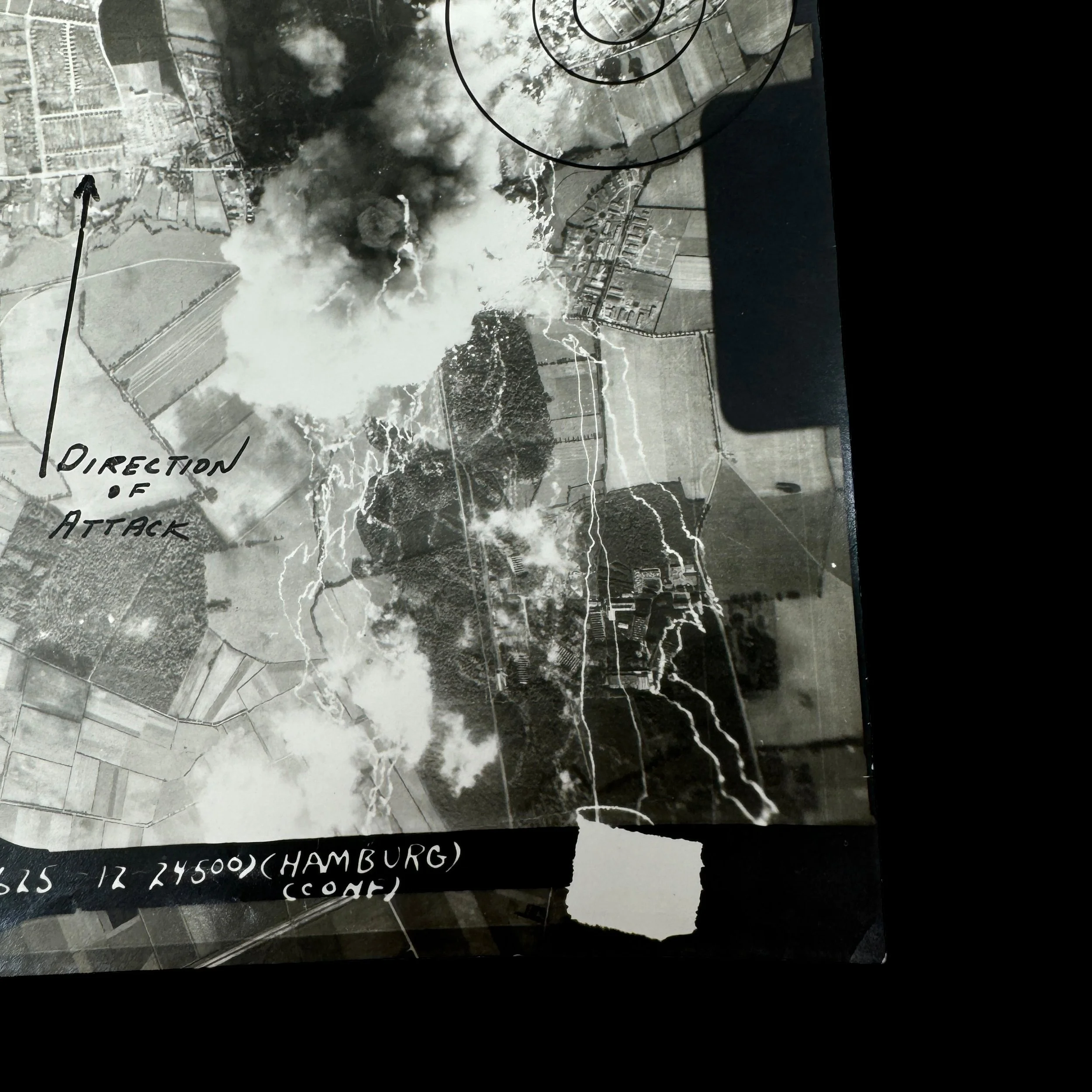
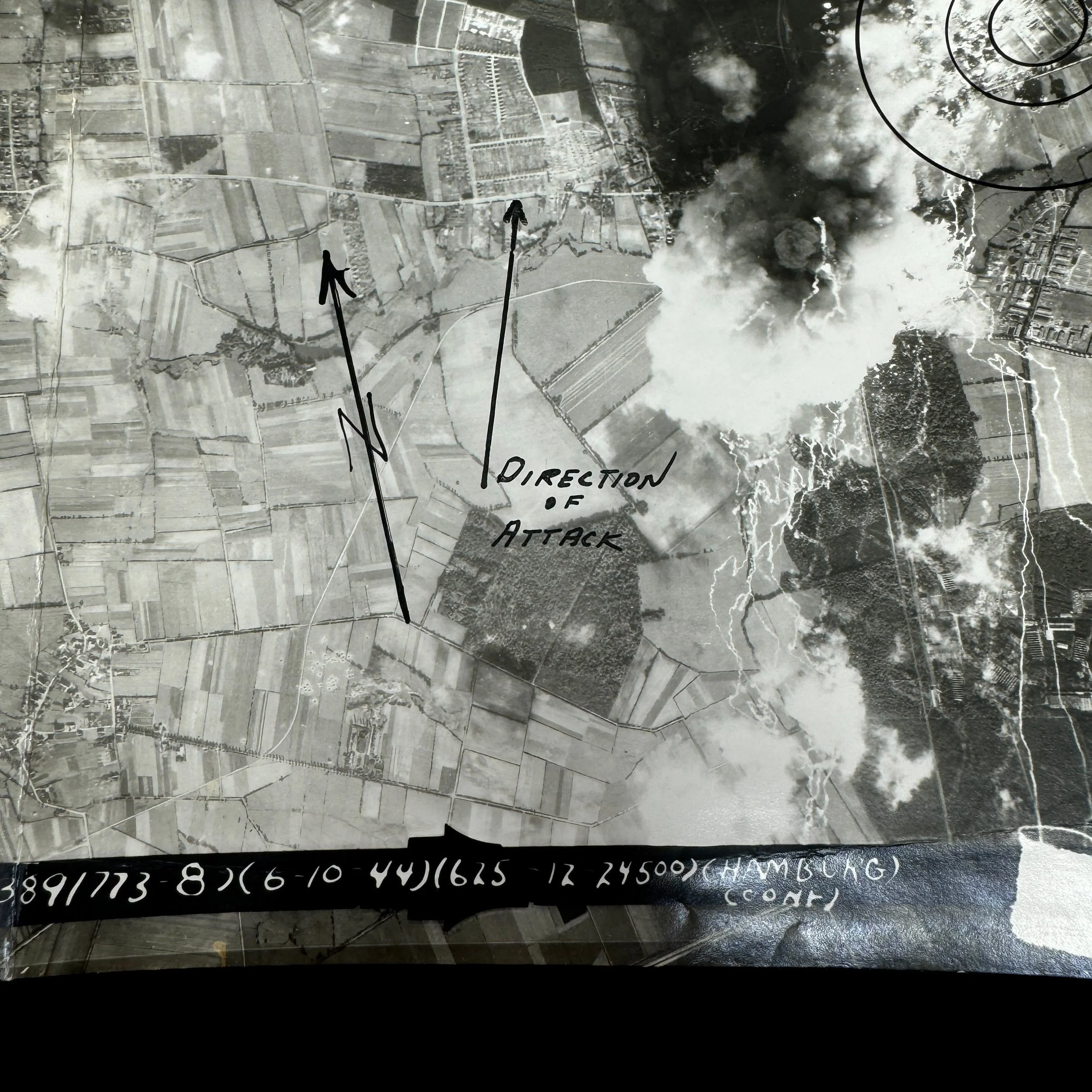

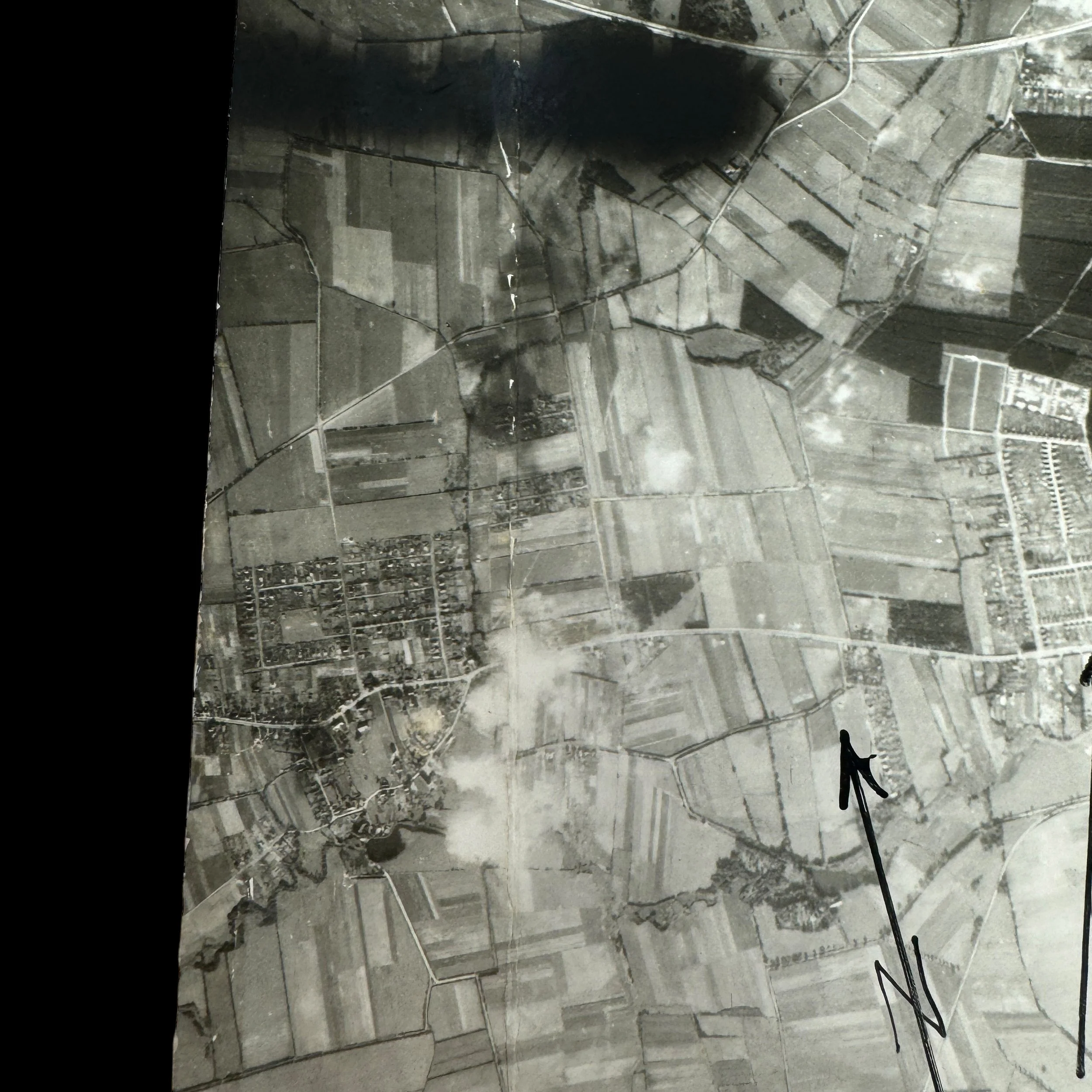
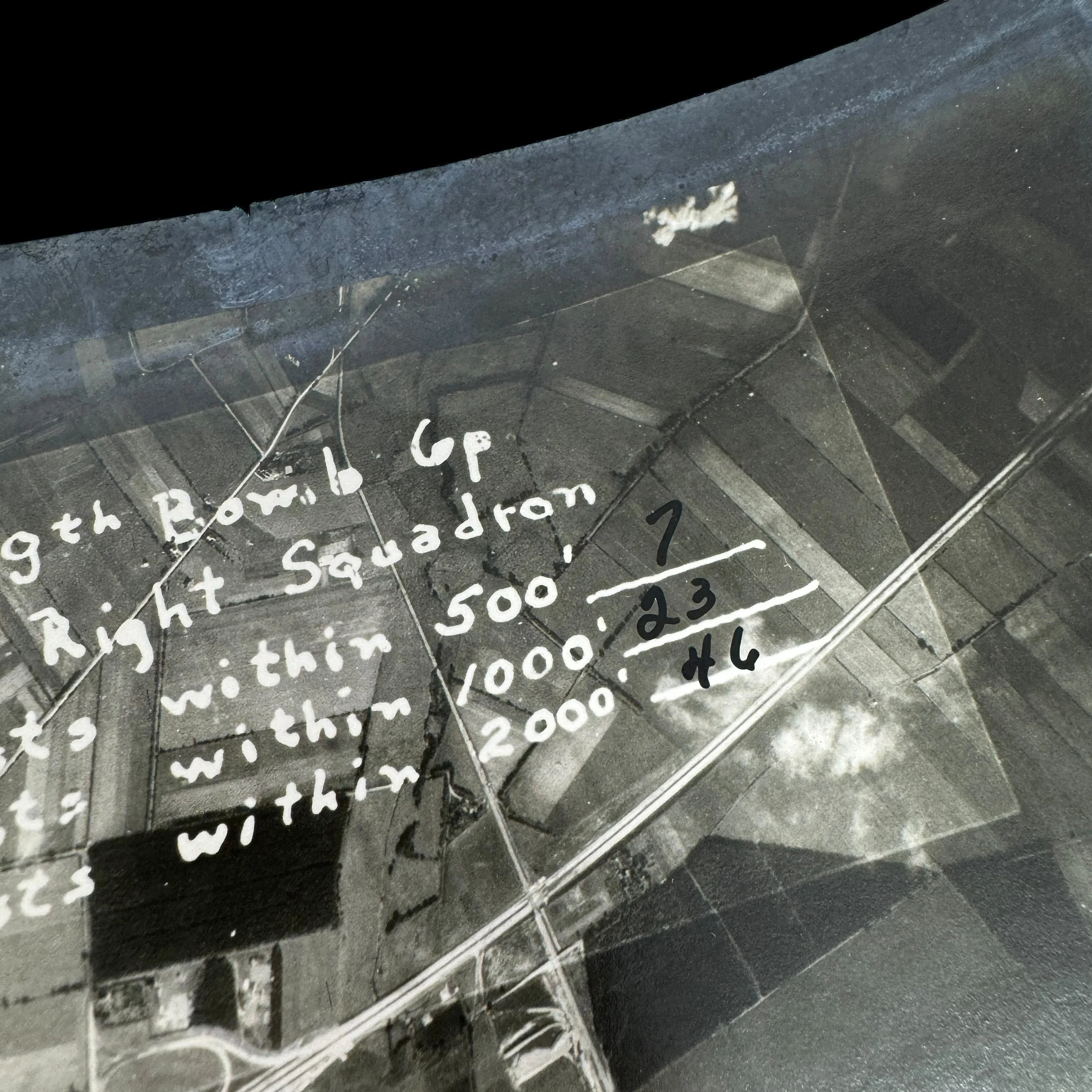
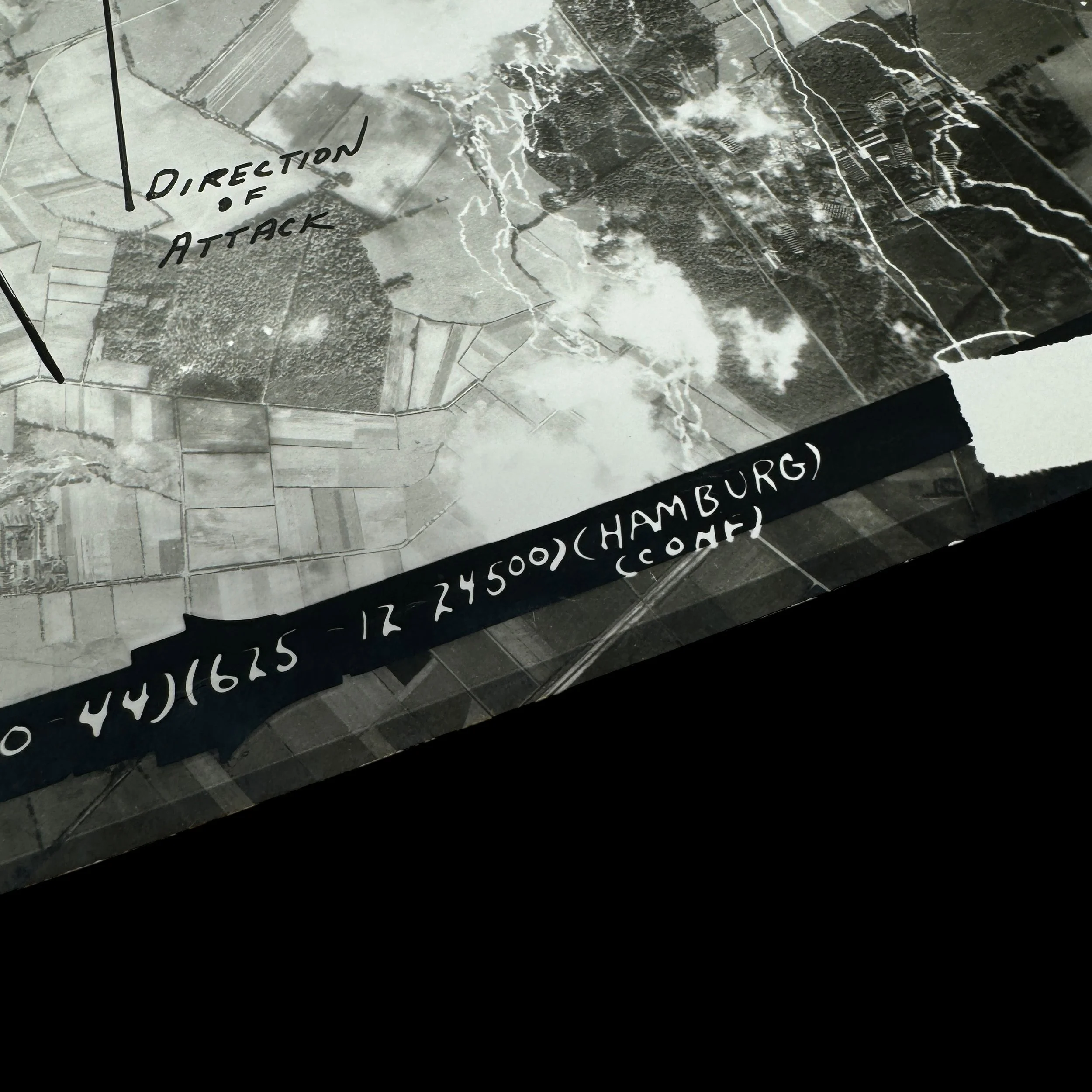
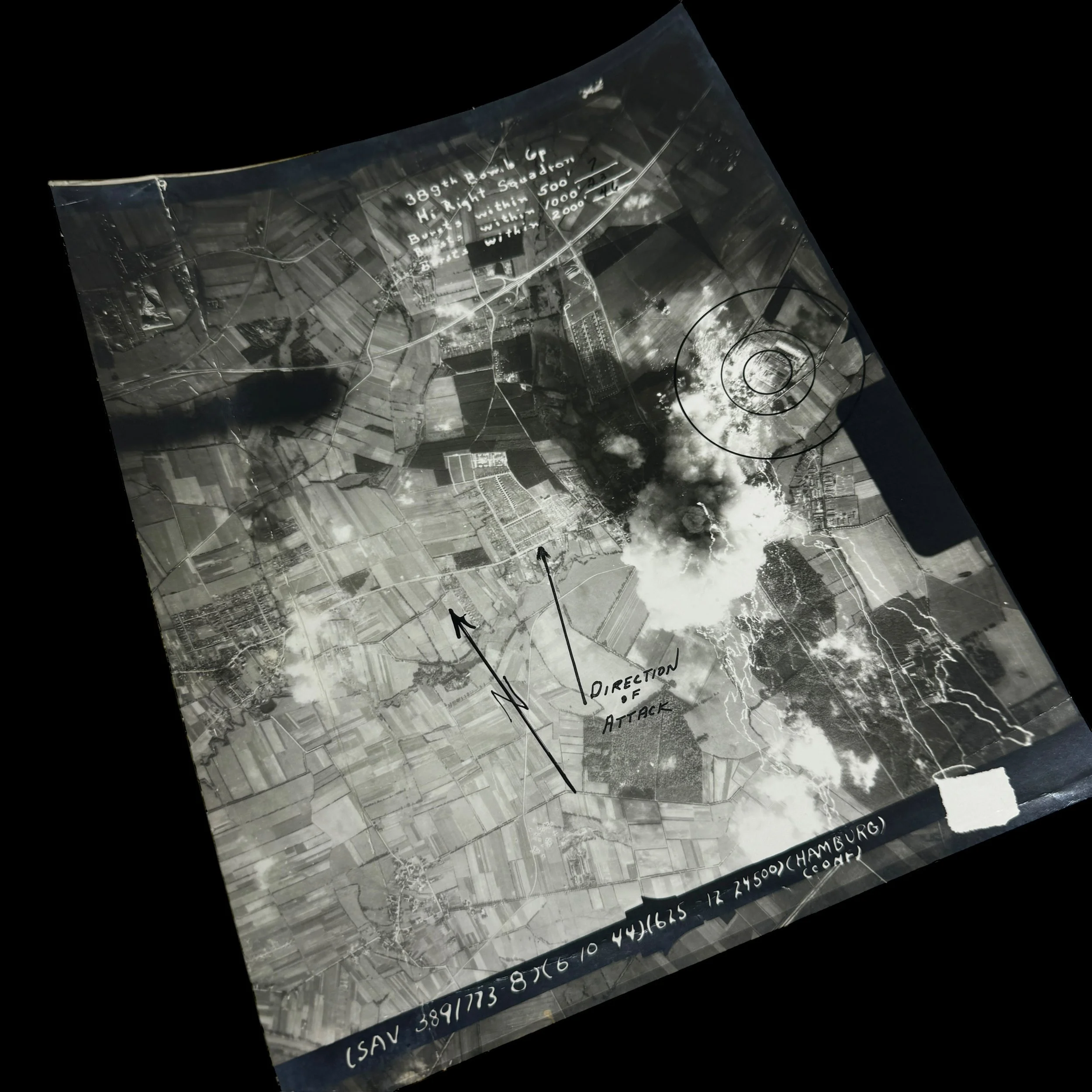
RARE! WWII 389th Bomb Group 8th Air Force October 6th, 1944 "Mission #206 - Hamburg / Rhenania, Germany (Oil Depot)" Type 1 Aerial Combat Mission Photograph*
Comes with a hand-signed C.O.A.
389th Bomb Group Mission #206
8th Air Force Mission #667
Mission Date: October 6th, 1944
Target: Hamburg / Rhenania, Germany (Oil Depot)
Classified: CONFIDENTIAL
Size: 8 × 10 inches
This exceptionally rare and museum-grade World War II artifact is an original "CONFIDENTIAL" marked Type 1 aerial combat mission photograph taken from a B-24 Liberator of the 389th Bomb Group, Eighth Air Force. Known as "The Sky Scorpions," the 389th Bomb Group was renowned for its precision and effectiveness in the Allied strategic bombing campaign over Europe. These photographs offer a unique and irreplaceable view into the air war, capturing the intense and perilous missions that helped shape the outcome of the conflict.
Taken during bombing runs conducted by the 8th Air Force, these photographs were developed immediately upon the return of B-24 aircraft to their home base at Hethel Airfield, England. Surviving the gauntlet of enemy aircraft and heavy anti-aircraft artillery (flak), these images were critical tools in the Allied war effort. Each mission photograph was classified based on the sensitivity of the operation—marked "Confidential," "Secret," or "Top Secret"—depending on the target’s strategic value and the secrecy of the mission.
Essential Roles of the Photographs in the Allied War Effort
1. Post-Mission Briefings
These combat mission photographs were pivotal in post-mission debriefings with pilots and aircrews. They provided:
Visual Feedback: Detailed images of the bombing runs allowed crews to evaluate the success of their missions, identifying whether their payloads struck intended targets or missed due to navigation challenges or enemy interference.
Combat Intelligence: The photographs revealed enemy defenses encountered during the mission, including anti-aircraft gun placements, flak zones, and fighter interception patterns.
Crew Training and Strategy Refinement: By reviewing these images, crews improved bombing accuracy and adjusted tactics for future missions, minimizing risks and maximizing impact.
2. Intelligence and Mapping
The Type 1 photographs served as invaluable sources for updating Allied intelligence. Analysts used them to:
Identify New Targets: Reconnaissance of enemy industrial sites, supply depots, and military installations informed future mission planning.
Map Enemy Defenses: Photographs helped chart flak concentrations, radar installations, and troop movements, creating comprehensive intelligence maps.
Evaluate Bombing Effectiveness: Post-bombing imagery was used to measure the destruction of critical infrastructure, such as oil refineries, railway networks, and manufacturing facilities, ensuring strategic objectives were met.
3. Strategic Bombing Campaigns
The Eighth Air Force relied on these images to adjust its ongoing bombing strategies. They played a crucial role in:
Target Selection: High-priority targets were identified and prioritized based on the damage assessment from previous missions.
Operational Planning: Insights gained from these photographs shaped mission parameters, including flight routes, bombing altitudes, and formations to counter German defenses effectively.
Historical Significance and Legacy
These photographs represent the courage and precision of the 389th Bomb Group, whose motto, "The Sky Scorpions," symbolized their unyielding resolve. Stationed at Hethel Airfield, the group flew daring missions deep into enemy territory, enduring relentless opposition from Luftwaffe fighters and flak batteries. The combat imagery they produced not only documented their contributions but also played an instrumental role in weakening Germany’s industrial and military capabilities.
Today, these artifacts are considered museum-grade relics, embodying the technological ingenuity and strategic foresight that defined the Allied war effort. Their scarcity adds to their historical value, as many such photographs were destroyed after the war to safeguard classified information. Those that remain offer historians, collectors, and enthusiasts an unparalleled window into the air war over Europe.
The Type 1 aerial combat mission photograph taken from a B-24 Liberator of the 389th Bomb Group is more than just an artifact—it is a testament to the bravery, innovation, and meticulous planning that characterized the Eighth Air Force’s campaign. These images not only guided the Allied forces to victory but also serve as a visual legacy of the sacrifices and triumphs of those who risked everything in the skies over Europe. Preserving these photographs ensures that the story of "The Sky Scorpions" and their vital role in history will never be forgotten.